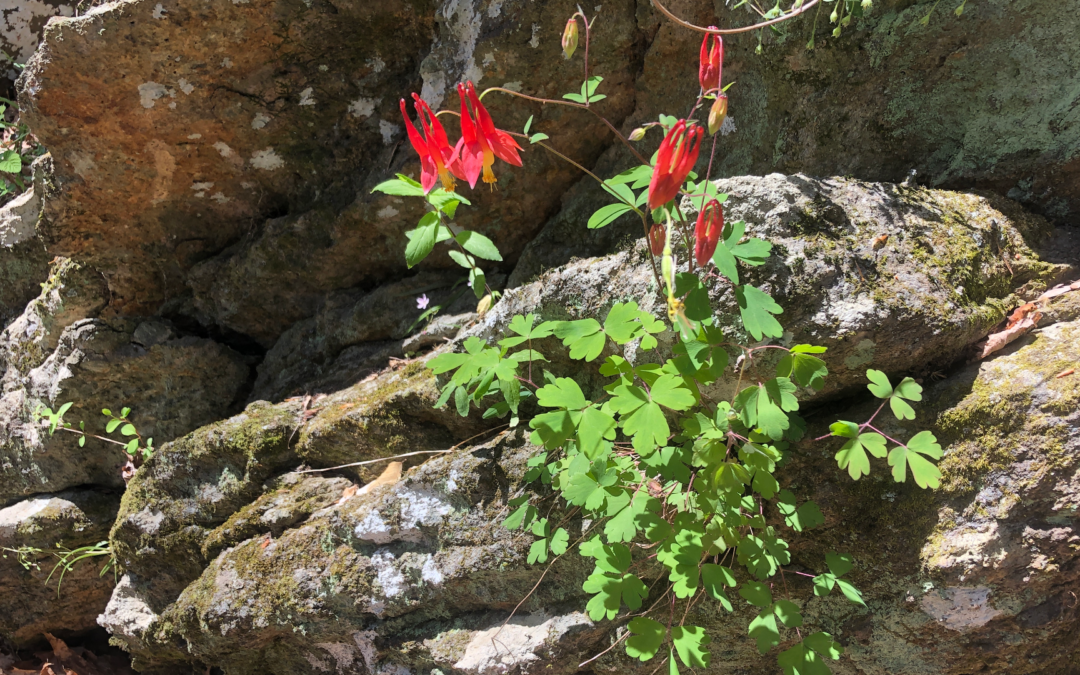Common name: Eastern Columbine
Botanical name: Aquilegia canadensis
Plant family: Ranunculaceae
Plant Description
- Plant size: 1 to 3 feet
- Plant life cycle: Perennial
- Foliage color: Green
- Plant type: Herbaceous Perennial
- Bloom color: Red and yellow (others available)
- Bloom time: Late spring to early summer
- Seasonal interest: Spring
- Preferred sunlight: Part shade to full sun
- Soil type: Well-drained
Eastern Columbine is an enchanting woodland plant that seems to fit better in the world of Dr. Suess than it does in its native home of Maryland woodlands. Whimsical flowers nod gracefully above the light green fern-like foliage, suspended on slender, delicate stems. Each individual flower resembles a tiny lantern with five vibrant, downward facing, tubular red and yellow petals. Reaching heights of 1 to 3 feet, its blooms appear late spring to early summer. There are also cultivated varieties that offer different colored blossoms such as purple, pink, and white. The new foliage of Eastern Columbine is some of the first to emerge in early spring. It prefers dappled sunlight and well-drained soils. Its fairytale-like appearance and adaptability make it a delightful addition to Maryland gardens.
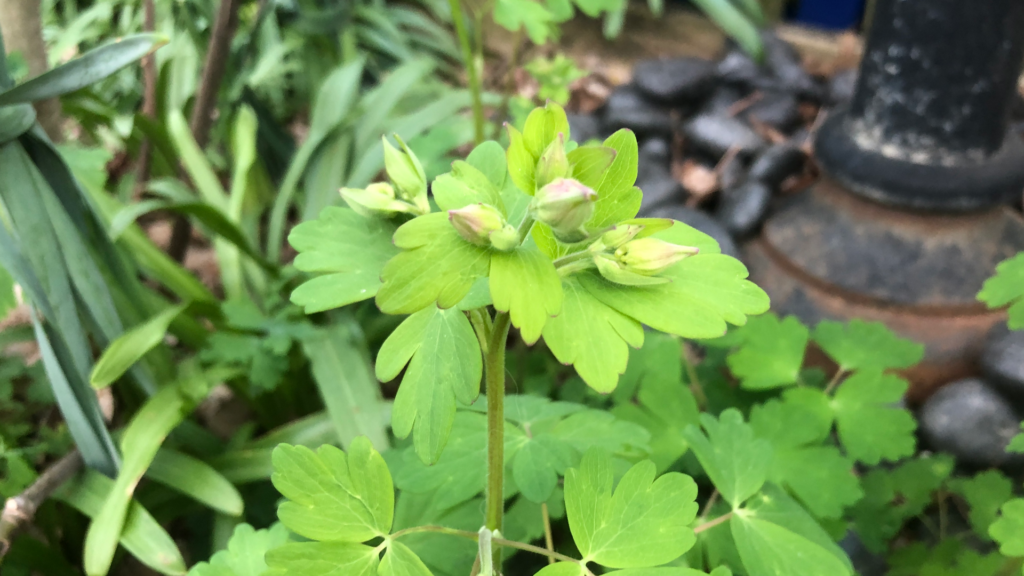
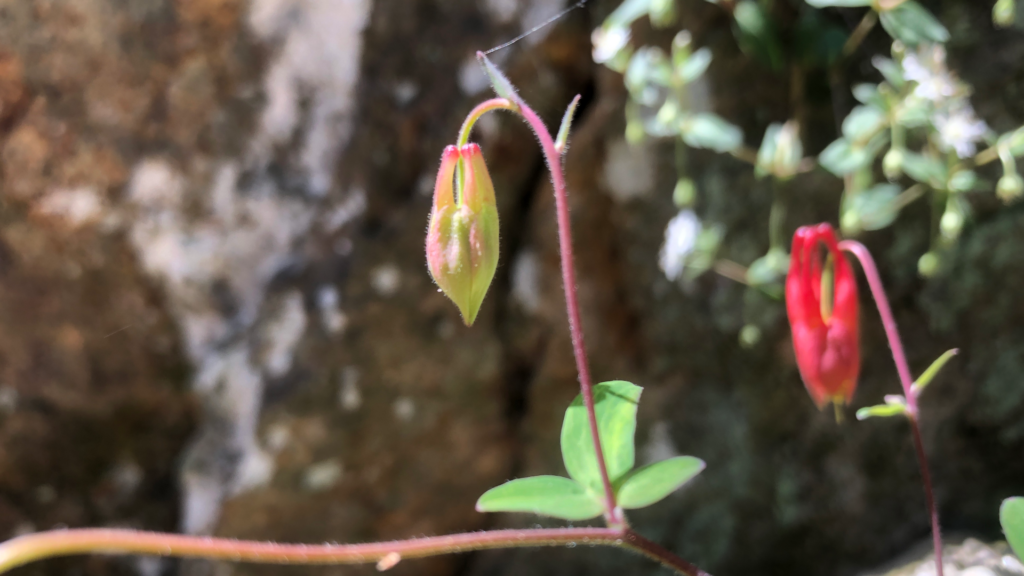
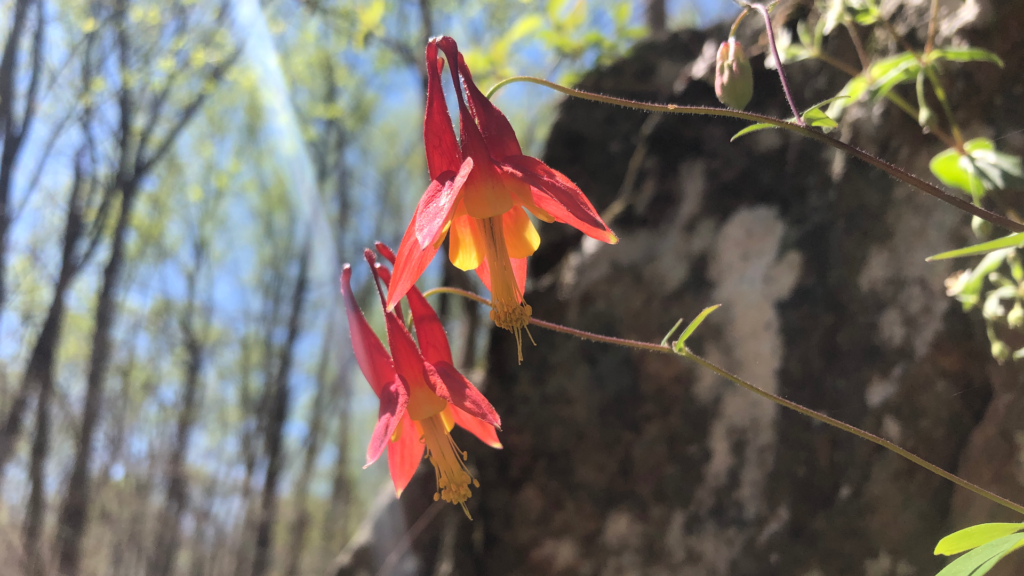
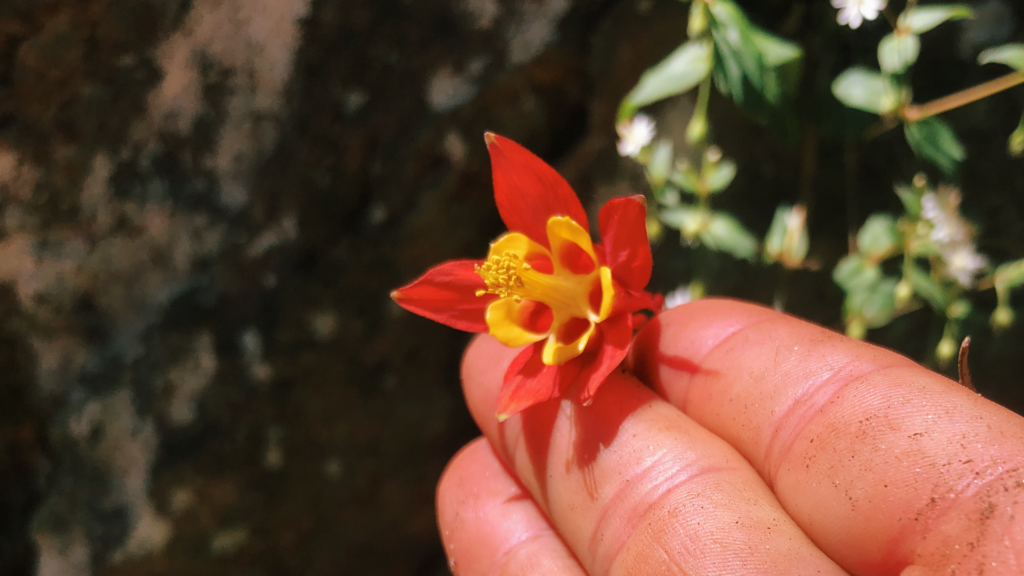
Common Problems
While generally resistant to pests and diseases, Eastern Columbine may face issues with leaf miners. Damage from leaf miners will appear as lightly colored squiggles in the leaves. In most cases, no action is needed and the plant will continue to develop new healthy foliage throughout the season.
Care and Maintenance:
Caring for the Eastern Columbine is relatively straightforward. Ensure well-drained soil and provide consistent moisture, especially during dry spells. Deadhead spent blooms to encourage continuous flowering, and consider dividing mature plants to promote vigor.
Eastern Columbine seeds germinate easily. Depending on a gardener’s goals, seed heads can be left to allow the population to grow, or removed to prevent spreading
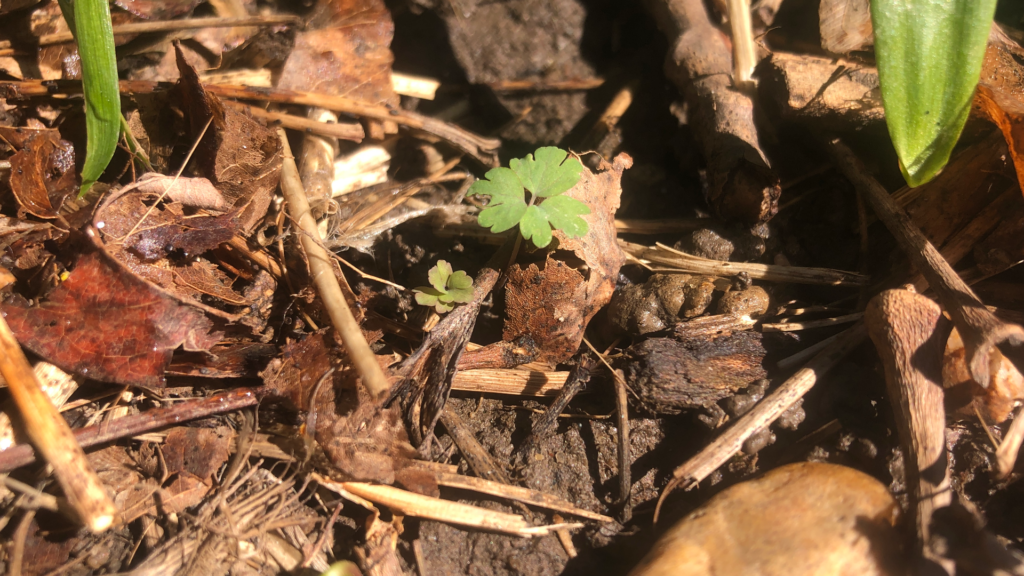
Garden Uses
Eastern Columbine is a versatile plant that looks great in both a formal and organic setting. Its vibrant flowers attract pollinators, making it an excellent choice for wildlife-friendly gardens. Eastern Columbine looks great planted beneath an understory tree or amongst a variety of other wildflowers in a cottage style garden. One of the most enchanting ways to utilize Eastern Columbine is from seed. The tiny seeds germinate with ease and can grow in nooks and crannies of large moss covered rocks for a truly mesmerizing display. Additionally, the delicate blooms can be cut for charming and unique floral arrangements.
Ecosystem Services:
- Pollinator Habitat
The tubular shape of Eastern Columbine’s flowers and the red and yellow hues make it a favorite for the energetic hummingbird. Their long bills are well-suited for reaching into the spurred flowers, extracting nectar, and inadvertently transferring pollen from one bloom to another.
Various bee species, including bumblebees and solitary bees are attracted to the sweet nectar of Eastern Columbine. The unique shape of the flowers provide easy access for the bees to harvest nectar.
Eastern Tiger Swallowtail and Columbine Duskywing butterflies also frequent the radiant blossoms to feed on the nectar. Eastern Columbine provides a valuable nectar source for butterflies and contributes to the overall biodiversity of the garden.
Planting Suggestions
Create an enchanting woodland shade garden by planting Eastern Columbine alongside woodland companions like native Bleeding Heart (Dicentra eximia), Wild Geranium (Geranium maculatum) and fern species.

Sources and References
- Maryland Native Plant Society
- Lady Bird Johnson Wildflower Center
- University of Maryland Extension

